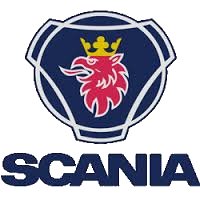

Scania CER: Microsoft Dynamics CRM Boosted Its Growth and Backed It Up During a Time of Crisis
 A branch of the Swedish automobile company for the Czech Republic, Slovakia, and Hungary. Specializing in commercial vehicles over 18 tonnes and buses.
A branch of the Swedish automobile company for the Czech Republic, Slovakia, and Hungary. Specializing in commercial vehicles over 18 tonnes and buses.
Task
To implement an open and customizable CRM system that will interconnect trade and service operations and enable good customer tracking throughout the whole life of the vehicle fleet.
Two basic facts led Scania to deploy CRM in 2006: experiences of companies from various industries sufficiently proving the viability and return on investments in CRM, and the experience of a Moravian dealer who developed and deployed simple CRM software, the benefits of which were immediately evident in the sales volume and customer care results. In addition, the company had recorded rapid growth and was selling around 1,000 new vehicles in the Czech Republic alone, while sales representatives lacked information about customer satisfaction with service shops, overall client histories, etc. It was also problematic to maintain contact with customers if a sales representative fell ill or left the company, because the market in the Czech Republic alone represented about 3,000 to 4,000 clients and the number of the employees taking care of them was limited.
Scania CER had a choice of several different CRM systems. The key requirements that influenced the system selection were that it should be open and easily customizable to the current needs of the company. A simple user interface and, of course, price also played significant roles. The winner of the internal selection procedure was Microsoft Dynamics CRM, which was implemented by Infinity.
The primary goal set by Scania CER for CRM deployment was to interconnect trade and service operations and thus achieve a consolidated and continuous level of customer care during the entire life cycle of the customer’s vehicle fleet and also to better identify new business opportunities.
Solutions
The new system was deployed in the sales department and all service shops operated by Scania CER within eight months after the conclusion of the contract with Infinity, at the beginning of 2007. Microsoft Dynamics CRM was deployed in the Czech Republic and Slovakia. The task of the representatives of the importers, customer service, sales agents, and the Moravian dealer who participated in the implementation was to reflect best practices of leading departments and employees in the new CRM. After individual processes had been set, it did not take long to deploy the CRM system.
All sales representatives started to actively utilize Microsoft Dynamics CRM shortly after it had been put in normal operation, because Scania CER prepared a motivational programme for them with bonuses awarded for its utilization. The company thus ensured that customers received new higher quality care immediately after the system deployment, regardless of the sales representative taking care of them. The sales representatives were also satisfied with the CRM system after they were used to it and had learned how to use all its functions. As a result, the company had no problems to successfully sell 1,200 vehicles in the Czech Republic alone during 2007, which was its strongest year ever.
Achievements
The first signs of the global financial crisis effects on the sales of commercial vehicles appeared in 2008. Scania CER therefore focused on maintaining the level of revenues from customer service and started proactively offering customer service through its sales representatives, which was no problem with the CRM system comprising information about the frequency of visits, satisfaction of customers, condition of their vehicle fleet, etc. This was a step that helped the company to keep the level of revenues for service at the level of previous years. Nevertheless, the volume of new vehicle sales in 2009, when the crisis fully unfolded in the Czech Republic, unfortunately dropped by one third of the sales in 2007, and the company had to go through intensive restructuring, when some employees were made redundant in all departments, including sales representatives. The new CRM system was a great help for the company even at that moment. Thanks to its accurate data on the number of contacts with customers and the effectiveness of contacts as achieved by individual sales representatives, the company was able to identify the most efficient sales representatives and continue cooperating with them. The CRM system also ensured that the level of provided customer care and the information about previous contacts was maintained for the customers who had been cared for by sales representatives who were dismissed from the company.
Microsoft Dynamics CRM also helped to protect the company from bad payers at a time of crisis. The sales representatives who were in touch with the existing and prospective customers would enter information about the customers’ current financial position, which they had obtained for example from leasing companies, to the system. Scania CER could thus adapt its payment terms to the information collected in CRM in time. For example, if a major customer needed to extend the maturity of the invoice at a service shop, and it was obvious from the information in CRM that the company was in good shape and had been buying its vehicles and having them serviced at Scania CER for a long time, Scania CER could meet such a request without any problems. And vice versa, if a company appeared that had placed an order for a new towing vehicle but ten of its vehicles had been taken away by a leasing company two months before that, Scania CER could modify its payment terms for the new towing vehicle to protect itself as much as possible against the risk of default on the outstanding payment. Microsoft Dynamics CRM thus helped Scania CER to avoid unpleasant consequences of the crisis in the form of bad debts.
Microsoft Dynamics CRM proved to be an excellent tool for the company in coping with a new phenomenon that occurred in the Czech Republic in 2009, at the time of the sharpest decline in sales of new vehicles. Leasing companies had confiscated hundreds of heavy lorries and other trucks that they needed to sell. This was easy for Scania CER thanks to Microsoft Dynamics CRM. Sales representatives could make use of records in the CRM system and start selling used vehicles in addition to new ones. For example, if a customer had mentioned plans in 2008 to buy a new lorry but did not then have enough money to do so, the sales representative could now offer a nearly-new lorry with the same or similar specification as the customer required. Apart from that, a number of changes resulting from the new market situation could be added in CRM by Scania CER itself because an employee trained as a Microsoft Dynamics CRM developer in two months; that employee is now in charge of less extensive changes in the system.
When in 2010, the company began a rapid return towards the levels of its sales before the crisis, Microsoft Dynamics CRM rendered it one more service. The high level of optimization of all the processes in the sales department enabled the company to increase the sales of new vehicles by 50 percent without needing to hire even one new sales representative. Microsoft Dynamics CRM thus proved to be a suitable tool for Scania CER during a period of growth, but also during and after a crisis.